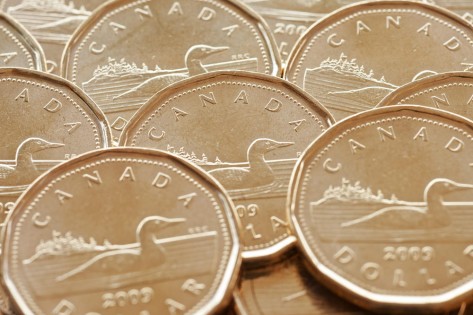 TORonTO — The Canadian dollar was higher Friday morning amid signs of stronger than expected economic growth.
TORonTO — The Canadian dollar was higher Friday morning amid signs of stronger than expected economic growth.
The loonie was up 0.21 of a cent to 94.67 cents US as Statistics Canada reported that gross domestic product grew at an annualized rate of 2.7 per cent during the third quarter. That was better than the 2.5 per cent pace that economists had expected.
GDP growth in September was ahead 0.3 per cent versus the 0.2 per cent rise that had been expected.
At the same time, the agency revised second quarter growth downward to 1.6 per cent from 1.7 per cent.
Oil prices moved higher after losing ground over the last four sessions because of concerns of rising supplies in the U.S. Data released Wednesday showed inventories up last week for a 10th week in a row.
Oil has declined from about US$110 in September due to reduced tensions in the oil-rich Middle East but above all to muted demand and high supplies.
RELATED: Canadian dollar flat ahead of heavy slate of economic data
On Friday, the January crude contract on the New York Mercantile Exchange climbed 39 cents to US$92.69 a barrel.
December bullion rose $13 to US$1,250.90 a barrel while December copper gained three cents to US$3.22 a pound.
In Europe, the focus was on official inflation and unemployment data. Both were encouraging, from the European Central Banks perspective at least.
Eurostat, the EUs statistics office, reported a rise in the 17-country eurozones inflation rate to 0.9 per cent in November from Octobers near four-year low of 0.7 per cent. Analysts said that will likely ease fears at the ECB of an imminent slide into deflation.
Falling prices can cause a protracted slide in consumer spending as individuals postpone spending in the hope of getting a better bargain down the line.
Also, the statistics office reported that the number of people unemployed in the region fell by 61,000 in October. That was the first fall since April 2011 and may signal that the recovery from recession may start to be helping the labour market.




